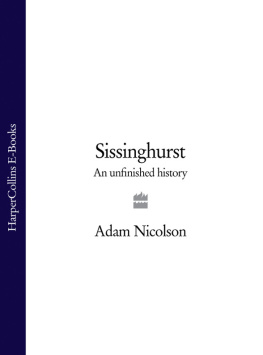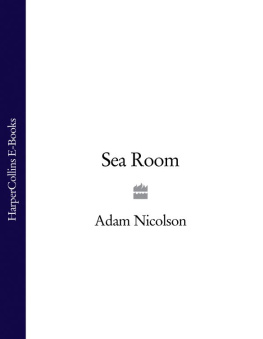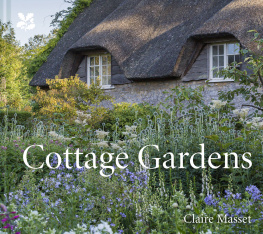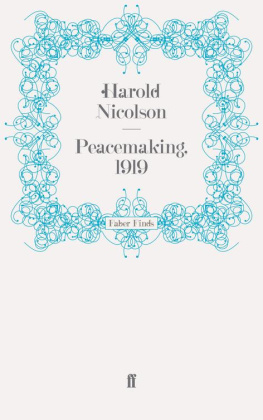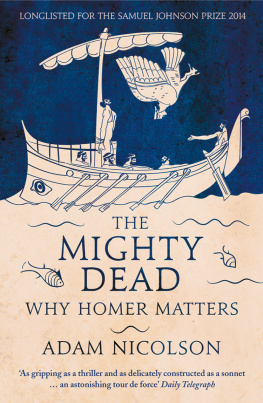
for Sarah
with all my love
and
for Sally Bushell, Jonathan Light,
Sue Saville and Fiona Reynolds
with many thanks for
their longstanding support and encouragement
A remarkable eighteenth-century picture of Sissinghurst has surfaced in Ontario. For years nobody has known which house it portrayed and its owner, Derrick Bradbury, recently started to circulate copies to see if it could be identified. It was finally recognized by Nicholas Cooper, the architectural historian, as Sissinghurst in May 2008.
This watercolour was intended as a picture of a double murder, but it is also by far the best portrayal ever discovered of Sissinghurst as the Elizabethans intended it to be.
An onion-domed prospect tower-cum-gateway was centred on a distinguished courtyard, at the far end of which an elaborate doorway opened into a passage which in turn led through to the medieval court beyond. Small banqueting houses to the north and perhaps to the south had large windows overlooking the park. Dignified barns stored the hay necessary for the park deer in the winter. A great garden was laid out between the middle courtyard and the moat to the north and east, of which the paths and beds can faintly be seen in this picture. It was on the site of the lower left hand bed of this Elizabethan garden that Vita Sackville-West discovered the unknown gallica rose, now called Sissinghurst Castle, when she arrived here in 1930. It now seems at least possible that bushes of the particularly persistent rose had been growing in this garden continuously since the sixteenth-century.
By the mid-eighteenth century, Sissinghurst was burdened by debt ,the park was in ruins and the place was let out to the government because no one in the Baker family cared for it. It became a camp for French naval prisoners during the Seven Years War. About three thousand of them were held there, guarded by detachments of various English Militia regiments.
The prisoners trashed the buildings, destroying the Elizabethan paneling and marble fireplaces, burning the pews and altar rails in the chapel, leaving the garden without a stump above ground. After the war was over, most of the buildings shown here were demolished. Only fragments, including the tower, the long front range and one barn, now remain. These were the damp and poignant ruins in which Vita Sackville-West and Harold Nicolson made their famous garden.
On July 9 1761, the terrible incident shown in the painting occurred. Its details are known from the evidence given to an enquiry later that year. Early in the morning, three re-captured escapees were being led back to Sissinghurst through the fields, outside the frame of this picture to the top. A Number of P[risoner]s having the curiosity to see which of their comrades they were that were retaken, did all make towards the Fence but with no other intent. The sentry on the far side of the moat, a soldier of the Kent Militia called John Bramston, told them not to come near the fence, or he would fire at them.
Bramston was already known to be off his head. He seems to have loaded his musket with three balls. One of them lodged itself in the wall surrounding the garden (shown pale pink on the left of the garden), but one hit a Frenchman, Baslier Baillie, and wounded him. (He is shown here being attended by two of his friends.) The third hit and killed Sebastien Billet, shown here lying dead, with his blood spattered on the ground beside him. Baillie would die later from his wounds in the hospital a toxic sink of disease and filth which was in the barn at the bottom left of the picture.
Bramston was far from contrite, swaggering around the prison that morning saying If he had killed more it would not have given him any uneasiness. In the general shouting and commotion after the shootings, another French-man, Claude Hallet was wounded by a militiaman with a bayonet, and the artist shows that outrage too.
Nicholas Cooper thinks the picture may have been painted by a Frenchman, or perhaps by an opportunist Englishman as a form of visual journalism. Certainly the architectural details are made to look a little more French than they appear in other pictures made by Englishmen at the same time. The lanterns on posts are eighteenth-century security lighting; the little building by the moat with steps up to it is the Necessary House or Privy; and the wheeled carts attached to the barns in the bottom left of the picture are for the night soil.
ONE
Sissinghurst
I HAVE OFTEN DREAMED of Sissinghurst on fire. I am in the house, on the middle floor, and above me the boards are cracking. The tiles are falling away on the outside. Smoke pours into the night. But theres no rollocking, licking flame. Its more like a fungus eroding the timbers, a slow and inexorable eating away at the most precious thing I know.
As I see it burning, I am sure I am dreaming of the framework of my life rotting in the heat. Its a form of dissolution, of a valuable thing coming to an end. Sissinghurst is the shape of what I am. I do not own it but it is my place. Anything else can only ever be an approximation to it.
I have lived here, on and off, for the last forty-five years. For my entire conscious life it has been what I have thought of as home, even when living away, in London, or abroad. For all my attachment to other places, Sissinghurst has always seemed like the root. I belong to it. It is the land I have walked over, looked out over, driven through, smoked my first cigarette in, planted my first tree in, bicycled over, slept in and lived in all my life. It is where I came to understand what a tree was, what a friend was, what a hideout was, what a landscape was, how entrancing streams were as they made their way in and out of the margins of a wood, and what solitariness, nature and love might be.
If I think of a view, or of mist on an autumn morning, the way it lies in a valley like a scarf, or the way a stream when blocked makes a reedy place upstream of the blockage, where after time willows grow in the wetness and make a dark summer tent over the bog; if I think of the way wild flowers peak and then collapse as spring deepens into summer; if I think of geese belling across winter fields; or of being alone, or of the transition from childhood to adolescence, of the relationship of a place to its history or its future: every one of those things, strung out across my life, like lights marking a channel, is tied to and founded on Sissinghurst. When I was a boy, it entered my mind as a model of a place, the place against which to measure what the world could be.
There is a tree in the garden, an oak, growing on the edge of the moat that my sister Juliet and I planted together when she was four and I was one. It is nearly fifty years old but, in its tree-life, still in its teens. One or two of the lower branches have been pruned, to improve its shape, and the bark of the oak is creeping back, in pillowed, almost animal ridges, across the scars that the saw has left. But the rest of the tree it is a strange hybrid, a sycamore oak, which has oak leaves but drops sycamore seeds in the autumn, the single wings helicoptering to the autumn grass the rest of the tree is in the first glowing moment of adulthood, no leaning in the trunk, a full head of hair, if you can say that about a tree, a kind of bushy-brushed wholeness to it, its trunk like the trunk of a young man. It is now part of the Sissinghurst landscape, rooted, solid, essential, inevitably there, and I feel in my heart as much part of this place as that tree. My nutrients come from this soil.
When I was a boy here in the 1960s, my father used to take us, my sisters and me, down to the stream that runs through the wood, usually after lunch in the winter, to have a boat race. We chose small, fat sticks for boats, to be thrown into the stream where it entered the wood below a marshy patch in the Dog Field. He cut long wands from the hazels for what he called hoikers the only way, if your stick got caught in the deep trench of the stream, that you could hoik it back into the main flow. No cheating was allowed, nor hurrying on of your stick if it happened to be drifting in a treacle-slow section of the current. It had to be stuck and immobile before you could push it back into the race with the hoiker. The finishing line was the chestnut bridge by the outflow from the lake. All of us cheated when he wasnt looking.
Next page
